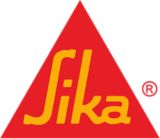Sika® Ucrete® CR 460
Sika® Ucrete® CR 460 is a two-part polyurethane joint filler. It is pourable and self-leveling. The Product is used together with Sika® Ucrete® P 460, a two-part clear polyurethane primer.
- Long working life
- Very good resistance to specific chemicals
- Very good mechanical and wear resistance
- Hygienic
- Non-tainting after curing
- Easy application
Usage
Sika® Ucrete® CR 460 is used for sealing induced joints in resin floors and around stainless steel channels and gullies. It is used in environments with heavy traffic and high levels of heat and chemical exposure. Sika® Ucrete® CR 460 is used for:- Industrial floors and warehouses
- Food industry
- Civil engineering structures
- Metal industry
Advantages
- Long working life
- Very good resistance to specific chemicals
- Very good mechanical and wear resistance
- Hygienic
- Non-tainting after curing
- Easy application
Packaging
3.0 kg
Product Details
Composition
Polyurethane
Shelf life
12 months from date of production
Storage conditions
The Product must be stored in original, unopened and undamaged sealed packaging in dry conditions at temperatures between +5 °C and +30 °C. Always refer to the packaging.
Refer to the current Safety Data Sheet for information on safe handling and storage.
Density
| 1.6 kg/L | (ISO 1183-1) |
Shore A hardness
Cured 28 days at +20 °C | ~80 |
Tensile strength
Cured 28 days at +20 °C | 1.6–2.0 N/mm2 |
Chemical resistance
Sika® Ucrete® CR 460 has very good resistance to:
Dilute mineral acids: chromic, hydrochloric, nitric, phosphoric and sulphuric
Dilute alkalis
Most dilute organic acids
Fats, oils and sugars
Mineral oils, most hydrocarbons, fuels, alcohols and salts
Cleaning agents and detergents
Sika® Ucrete® CR 460 has limited resistance to:
Concentrated mineral
Organic acids
Alkalis
Sika® Ucrete® CR 460 is not resistant to:
Aggressive organic solvents such as xylene and acetone
Contact Sika Technical Services for additional information.
Elongation at break
Cured 28 days at +20 °C | 20–23 % |
Application
Backing material
Use closed cell, polyethylene foam backing rod.
Sag flow
20 mm profile tested at +23 °C | < 2 mm |
Material temperature
Maximum | +40 °C |
Minimum | +5 °C |
Ambient air temperature
Maximum | +40 °C |
Minimum | +5 °C |
Dew point
The substrate temperature must be at least +3 °C above dew point to reduce the risk of condensation decreasing adhesion.
Substrate temperature
Maximum | +40 °C |
Minimum | +5 °C |
Pot Life
100–120 minutes
Consumption
Joint width | Joint depth | Coverage in g/linear meter | Coverage in linear meter/unit |
7 mm | 5 mm | 55 g/m | 55 m/unit |
10 mm | 6 mm | 100 g/m | 30 m/unit |
15 mm | 10 mm | 235 g/m | 13 m/unit |
20 mm | 10 mm | 320 g/m | 9 m/unit |
30 mm | 15 mm | 720 g/m | 4 m/unit |
SUBSTRATE PREPARATION
Poor adhesion due to inadequate surface preparation
Note: Primers are adhesion promoters. Primers cannot replace proper surface preparation and surface cleaning.
Do not use primers for improving poorly prepared or poorly cleaned joint surfaces.
|
|
|
Poor adhesion due to incorrect priming procedure
Incorrectly defined or uncontrolled priming procedures may lead to a variation in Product performance.
Test adhesion on project-specific substrates and agree on procedures with all parties before full project application. For more information contact Sika Technical Services.
The substrate must be sound, clean, dry and free of contaminants such as dirt, oil, grease, cement laitance, sealant residues and poorly bonded coatings which could affect adhesion of the primer and sealant.
The substrate must be of sufficient strength to withstand the stress induced by the sealant during movement.
Use techniques such as wire brushing, grinding, grit blasting or other suitable mechanical methods to remove all weak substrate material.
Repair all damaged joint edges with suitable Sika repair products.
Remove dust, loose and friable material from all surfaces before applying the sealant.
MIXING
- Using a slow speed stirrer, mix the content of the Part A pail for 30 seconds to disperse any separated material.
- Add the content of the Part B.
- Mix the two parts for a further 1–2 minutes. Do not mix excessively to minimise air entrainment.
- Ensure that no undispersed Part A is left on the side of the pail.
APPLICATION
Strictly follow installation procedures as defined in Method Statements, application manuals and working instructions which must always be adjusted to the actual site conditions.
- Apply the primer to the substrate using a brush. A thin layer (± 100 μm) should be applied to the joint edges.
- While the Sika® Ucrete® P 460 is still tacky (30 minutes to 2 hours, depending on the temperature), pour in the mixed Product to fill the joint flush to the surface. The Product can be applied on angled surfaces up to 2 % without slumping.
- When the primer has become tack-free, apply a second coat before pouring the Product to ensure proper bonding.
- Use a spatula to smooth the surface and remove trapped air.
CLEANING OF EQUIPMENT
Clean all tools and application equipment immediately after use with Sika® Remover-208. Once cured, hardened material can only be removed mechanically.
